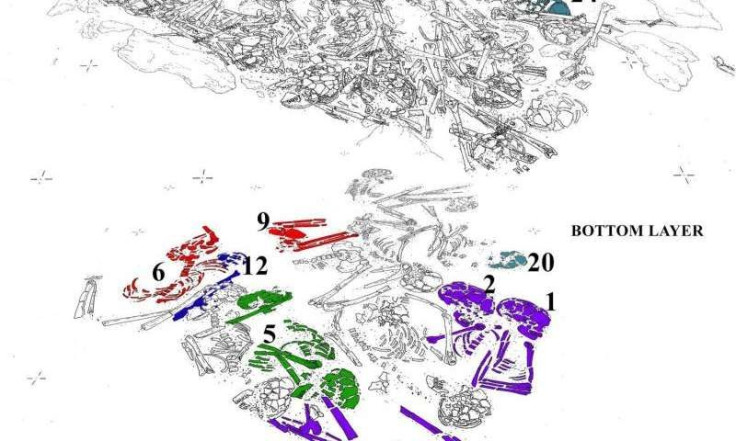6,000-Year-Old Tomb Reveals Common Burial Rituals Date Back To Neolithic Period

A 6,000-year-old burial site revealed that the ritual of burying community and family members near one another dates back to the Neolithic period, according to a new study. Researchers were able to develop a comprehensive picture of ancient burial traditions in Northern Spain, according to the journal PLOS ONE.
Researchers from Danube Private University in Austria examined dozens of people buried in the tomb over a 100-year-period. The study was able to identify details about 47 individuals using DNA, bone and isotope analysis. Based on the findings, researchers say that the tomb at Alto de Reinoso contained "several families from a local close-knit group," according to the authors. The community likely farmed cereal crops and herded sheep and goats.
A Neolithic Spanish burial site contains remains of a closely-related local community from 6000 years ago,... https://t.co/IHipsM62lM
— Archaeosoup Towers (@Archaeos0up) January 21, 2016
The tomb contained three different layers: the corpses found on the bottom layer were more closely related and in a few cases, researchers found family members had been laid to rest next to one other. In the middle layer, nearly all of the skeletons appeared to be missing parts as a result of what was likely physical mutilation. The tomb comprised three distinct layers. The individuals at the bottom of the tomb were more closely related and on occasion, family members appeared to have been buried side-by-side. Above them, almost all the skeletons exhibited signs of mutilation, such as missing skeletal parts, especially skulls, suggesting a shift in the use of the tomb.
"All the extensive data collected, including information on lifestyle, demographics, health status, diet and subsistence, mobility patterns as well as the genetic profile of the group fit in with the typical way of life of sedentary farming populations at this time period," the researchers wrote. "The [embracing] of a collective burial chamber for the community members rather than individual graves indicates significant shifts in social identity."
© Copyright IBTimes 2025. All rights reserved.






















